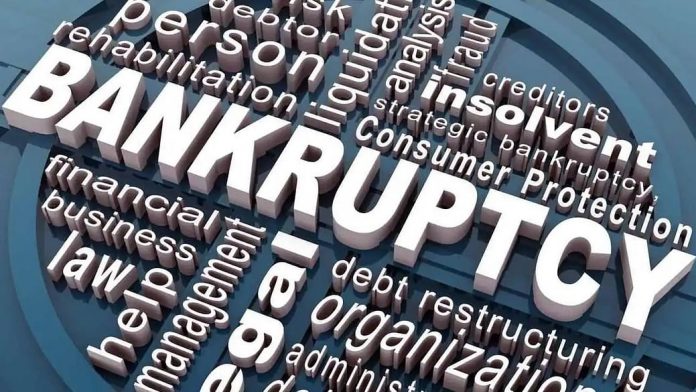This article is written by Aditi Jaiswal.
Table of Contents
Factual Background
In this case on October 21, 2016, IL&FS Financial Services Limited filed a winding-up petition in the Bombay High Court against La-Fin Financial Services Private Limited under Section 433(e) of the Companies Act, 1956.The Insolvency and Bankruptcy Code, 2016, went into effect on December 1, 2016, and the winding-up petition was transferred to NCLT as a Section 7 application under the Code, as per the Insolvency and Bankruptcy Rules, 2016.The suit alleges that La-Fin failed to follow through on its promise to buy back 442 lakh shares of MCX Stock Exchange Limited, a La-Fin group company.
The NCLT stated in its order dated 28-08-2018, after admitting the winding-up petition, that it was evident from a basic examination and reading of the share purchase agreement and the Letter of Undertaking that La-Fin had acquired a financial debt.
The NCLAT dismissed the appeal filed by Mr.Jignesh Shah, the La-Fin shareholder, against the order of admission, wherein the NCLAT confirmed the NCLT’s examination that the aforementioned contract would fall within the connotation of “financial debt” under the Code, and that the bar of constraint would not be involved because the winding-up petition was filed within a time limit of three years of the date from which the Code came into force.
Smt. Pushpa Shah (a La-Fin stakeholder) also filed a Writ Petition contesting specific aspects of the Code.On April 4, 2019, another Writ Petition was filed in the Supreme Court, contesting the legality of various clauses as well as the NCLT and NCLAT orders, followed by a Civil Appeal under Section 62 of the IBC Code against the NCLAT order.
Issue and Decision
NCLT
The NCLT and, as a result, the NCLAT examined, among other things, whether a contract of this sort would be considered a “financial debt” under Section 5(8) of the IBC. La-Fin said that the Letter of Undertaking was merely a letter of comfort and that there was no payment in exchange for IFIN’s time worth of money. As a result, La-Fin claimed that IFIN’s claim did not qualify as financial debt.
“…Financial debt can be split into two categories,” the NCLT stated in construing the meaning of “financial debt” under Section 5(8) of the IBC. One is distributed without regard for the time worth of riches. The second is any sum raised as part of any other business transaction that has the industrial effect of a loan. It is not required that money be “disbursed” on a regular basis. It was decided that in this situation, an amount had been raised for the purpose of economic gain or commercial gain, and hence could be classified as “financial debt.”
Because there was an assured return / commercial gain within a defined phase, the NCLT determined that IFIN’s purchase of MCX-SX shares as distinct from an investment. The fact that the quantity was to be repaid at an agreed rate of return by a specific date indicated that IFIN had not purchased shares in MCX-SX with the purpose of holding rights in perpetuity. As a result, it was determined that La-Fin committed to cancel the share-purchase contract by purchasing the shares within a stipulated time frame and paying a 15% accrual fee, which amounted to financial liability under the IBC.
NCLAT
The NCLAT upheld the pronouncement of the NCLT, restating that the amount had been raised for financial gain and has the industrial effect of borrowing, given that the terms of the contract included not only the procurement of shares but also the date by which the amount was to be repaid.
In addition, there was a constituent of the time value of money when one of the conditions related to an internal rate of return of 15%. For that reason, the amount came within the scope of “financial debt” and IFIN could declare as a financial creditor under the IBC.
Given that the conditions of the contract contained not only the acquisition of shares but also the date by which the amount was to be repaid, the NCLAT supported the NCLT’s decision, finding that the amount had been raised for financial benefit and has the industrial impact of borrowing.
In addition, when one of the requirements was a 15% internal rate of return, there was a component of the time value of money. As a result, the amount fell under the definition of “financial debt,” and IFIN was able to proclaim itself a financial creditor under the IBC.
Supreme Court
Following that, Jignesh Shah and Pushpa Shah, as La-Fin stockholders, successfully appealed the La-Fin judgments to the Supreme Court. The petitioners did not challenge the judgement on its merits, instead of focusing on the legal limitations imposed on IFIN.
The petitioners believed that, in light of the Supreme Court’s decision in B.K. Educational Services Pvt. Ltd. v. Parag Gupta and Associates, the Limitation Act, 1963 would apply to all Section 7 applications under the IBC, and that the current petition would be time-barred, as the original winding up petition had been filed in October 2016, well beyond the prescribed three-year period.
The Supreme Court agreed with this argument and granted the appeal, ruling that the winding-up petition was time-barred and hence could not be pursued. As a result, the La-Fin Judgments were overturned. The La-Fin Judgments established a major precedent under the IBC in terms of the meaning of “financial debt” under the IBC and the types of transactions that may be covered by it. Under the Insolvency Bankruptcy Code, the La-Fin Judgments specifically recognised put-option holders as “financial creditors.”
The La-Fin Judgments were only thrown aside because of the issue of limitation, according to the Supreme Court. The Supreme Court did not examine, discuss, or express an opinion on the La-Fin Judgments’ examination and findings on the matter of debt obligations arising from put-option contracts constituting a “financial debt” under the IBC. The NCLT and NCLAT decisions, on the other hand, have been amalgamated with the Supreme Court’s decision, which is now effective and enforceable on its own.
The analysis presented in the NCLT and NCLAT judgements, however, is consistent with prior NCLT, High Court, and Supreme Court decisions involving put-option transactions. For example, the NCLT held in Union Bank of India v. Era Infra Engineering that a debt responsibility arising from a put-option, a non-disposal undertaking, a promoter’s undertaking, and a deed of the pledge would meet the criteria as a “contract of guarantee” and would fall within the scope of “financial debt” under the IBC.
Similarly, the Bombay High Court declared a put-option to be “nothing but a guarantee” Vandana Global Limited v. IL&FS Financial Services Limited. Even in the landmark case of Pioneer Urban and Infrastructure Limited v. Union of India, the Supreme Court interpreted the provisions of Section 5(8)(f) of the IBC in a manner similar to the La-Fin Judgements, stating that the provision “would encompass within it amounts raised under contact which is not fundamentally loan transactions, as long as they have the business cons”
As long as an amount is “raised” under a real estate agreement with the primary goal of earning money, such ambit would be covered by Section 5(8)(f) because the sale deed between the developer and the home buyer would have the “business effect” of borrowing, in that money is paid in advance for temporary use in order to return a flat/apartment to the lender.”
In light of the foregoing, while the La-Fin Judgements’ precedential value has been diminished as a result of the Supreme Court’s decision in Jignesh Shah, the same verdict is unlikely to affect similarly situated put-option holders’ ability to productively maintain an action under the IBC as “financial creditors” if brought within the prescribed period of limitation.
LawSikho has created a telegram group for exchanging legal knowledge, referrals, and various opportunities. You can click on this link and join:
https://t.me/joinchat/J_0YrBa4IBSHdpuTfQO_sA
Follow us on Instagram and subscribe to our YouTube channel for more amazing legal content.
 Serato DJ Crack 2025Serato DJ PRO Crack
Serato DJ Crack 2025Serato DJ PRO Crack











 Allow notifications
Allow notifications



